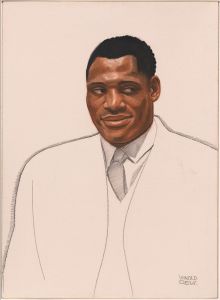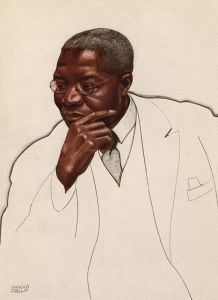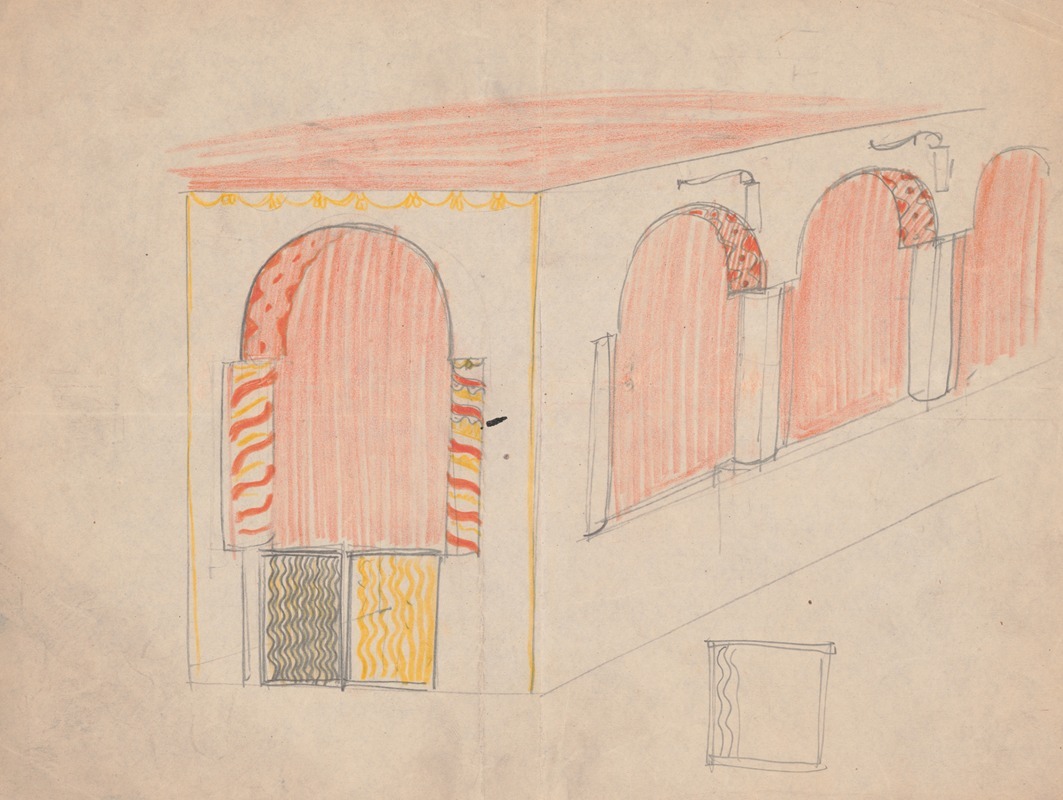
Design sketches for Crillon Restaurant, New York, NY. Perspective of interior
A hand-painted replica of Winold Reiss’s masterpiece Design sketches for Crillon Restaurant, New York, NY. Perspective of interior, meticulously crafted by professional artists to capture the true essence of the original. Each piece is created with museum-quality canvas and rare mineral pigments, carefully painted by experienced artists with delicate brushstrokes and rich, layered colors to perfectly recreate the texture of the original artwork. Unlike machine-printed reproductions, this hand-painted version brings the painting to life, infused with the artist’s emotions and skill in every stroke. Whether for personal collection or home decoration, it instantly elevates the artistic atmosphere of any space.
Winold Reiss was a German-American artist and designer known for his work in interior design and his vibrant use of color and pattern. He was born in 1886 in Karlsruhe, Germany, and immigrated to the United States in 1913. Reiss's work often reflected a blend of European modernism and American themes, and he became well-known for his portraits, especially of Native Americans and African Americans, as well as his contributions to interior design.
One of Reiss's notable projects was his involvement in designing interiors for various establishments, including restaurants. Among these, the Crillon Restaurant in New York City stands out as a significant example of his work in the field of interior design. The Crillon Restaurant was a part of the vibrant New York dining scene in the early 20th century, a period marked by a flourishing interest in art deco and modernist aesthetics.
The design sketches for the Crillon Restaurant, particularly the perspective of the interior, showcase Reiss's distinctive style. His approach often included bold colors, geometric patterns, and a harmonious blend of different cultural influences. These elements were intended to create an inviting and visually stimulating environment for patrons. Reiss's work on the Crillon Restaurant would have been aimed at providing a unique dining experience, reflecting both the cosmopolitan nature of New York City and the artistic trends of the time.
Reiss's sketches for the Crillon Restaurant would have been part of a broader trend in the early 20th century where artists and designers were increasingly involved in creating immersive environments in public spaces. This period saw a growing collaboration between artists and architects, with the goal of integrating art into everyday life. Reiss, with his background in both fine art and design, was well-positioned to contribute to this movement.
The perspective of the interior design sketches would likely have included detailed plans for the layout, color schemes, and decorative elements of the restaurant. Reiss's attention to detail and his ability to synthesize different artistic influences would have been evident in these sketches, making them not only functional design plans but also works of art in their own right.
Unfortunately, specific details about the Crillon Restaurant's interior design, such as the exact motifs used or the reception of the design by contemporary audiences, are not widely documented. However, Reiss's overall impact on design and his role in shaping the aesthetic of early 20th-century interiors remain well-recognized. His work continues to be studied for its innovative approach and its contribution to the development of modern interior design.
In summary, Winold Reiss's design sketches for the Crillon Restaurant in New York City exemplify his unique style and his contribution to the field of interior design. While specific details about the restaurant's interior are limited, Reiss's broader influence on design and his ability to create vibrant, culturally rich environments are well-documented aspects of his legacy.





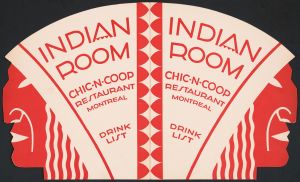
![Graphic design for cover of Survey Graphic Magazine; ‘Food’.] [Design with text and food items](/imgs/249248/s/winold-reiss-graphic-design-for-cover-of-survey-graphic-magazine-food-design-with-text-and-food-items-877075df.jpg)
![[Miscellaneous small sketches for inlaid table tops.] [Design with dancing couple motif](/imgs/249270/s/winold-reiss-miscellaneous-small-sketches-for-inlaid-table-tops-design-with-dancing-couple-motif-21782590.jpg)
![Design drawing for a restaurant , Washington, D.C.] [Interior perspective of arcade and stage](/imgs/249272/s/winold-reiss-design-drawing-for-a-restaurant-washington-dc-interior-perspective-of-arcade-and-stage-55cc2361.jpg)
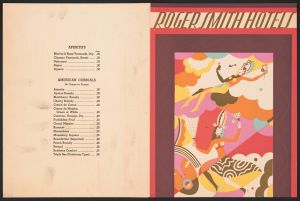
![Design for Longchamps Restaurant, 79th St., New York, NY.] [Proposed treatment for front of restaurant](/imgs/249289/s/winold-reiss-design-for-longchamps-restaurant-79th-st-new-york-ny-proposed-treatment-for-front-of-restaurant-83a4c86c.jpg)
![Design for unidentified restaurant, possibly Dunhall’s Restaurant, New York, NY.] [Wall treatment, sketch 2](/imgs/249303/s/winold-reiss-design-for-unidentified-restaurant-possibly-dunhalls-restaurant-new-york-ny-wall-treatment-sketch-2-fcb08634.jpg)
![Designs for roadhouse or terrace restaurant.] [Perspective elevation with colored roof](/imgs/249320/s/winold-reiss-designs-for-roadhouse-or-terrace-restaurant-perspective-elevation-with-colored-roof-95287611.jpg)

![Interior perspective studies for Restaurant Crillon, 15 East 48th Street, New York, NY.] [Study for Batik Room or Main Dining Room](/imgs/249377/s/winold-reiss-interior-perspective-studies-for-restaurant-crillon-15-east-48th-street-new-york-ny-study-for-batik-room-or-main-dining-room-f49c2d45.jpg)
![Designs for theater with black-framed proscenium and boldly colored settings.] [Study for stage light wall decoration, possibly for Caf ̌Crillon](/imgs/249419/s/winold-reiss-designs-for-theater-with-blackframed-proscenium-and-boldly-colored-settings-study-for-stage-light-wall-decoration-possibly-for-caf-crillon-8d25205e.jpg)
![Drawings for proposed decorations of Mike Lyman’s Restaurant, 424 W. Sixth St., Los Angeles, CA.] [Drawing #10, Scheme 1; Color scheme for ceiling – main dining room](/imgs/249426/s/winold-reiss-drawings-for-proposed-decorations-of-mike-lymans-restaurant-424-w-sixth-st-los-angeles-ca-drawing-10-scheme-1-color-scheme-for-ceiling-main-dining-room-6113fb5a.jpg)
